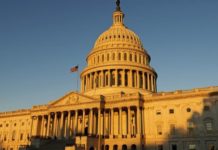
In recent years, federal deficits have exploded and debt outstanding has grown rapidly.
Considering continued high interest rates and modest economic growth, as well as consensus projections that these conditions will continue and worsen absent policy change, Congress and the next president will have to turn to further fiscal reform. The debate will move to the appropriate relative shares of spending cuts and revenue increases in that package.
There are many different ways to approach fiscal reform — like analyzing the impact of past legislations that created new programs or cut taxes, or digging deeper into the relative effects of particular benefits and tax provisions.
A simpler and more intuitive approach is to look at past recent trends on both sides of the ledger, determine the historical norms and ask which side is now out of line.
Consider the chart below showing annual federal spending on all programs and revenues from all sources as a percentage of GDP over the period 1960 through 2023. The difference is the deficit. With few exceptions, we have run deficits in the post-war, Great Society era; deficits were particularly large in the early 1980s and have been large since 2009.
Taking into consideration recessions which increase spending and decrease revenues, as well as stock market booms which increased revenues in 1999 and 2022, the overall apparent trend is toward larger deficits.
What about its composition? Simply eye-balling the figure, there has been a small decline in revenues in recent years, but a much bigger increase in spending — even ignoring the pandemic-related blow-out.






